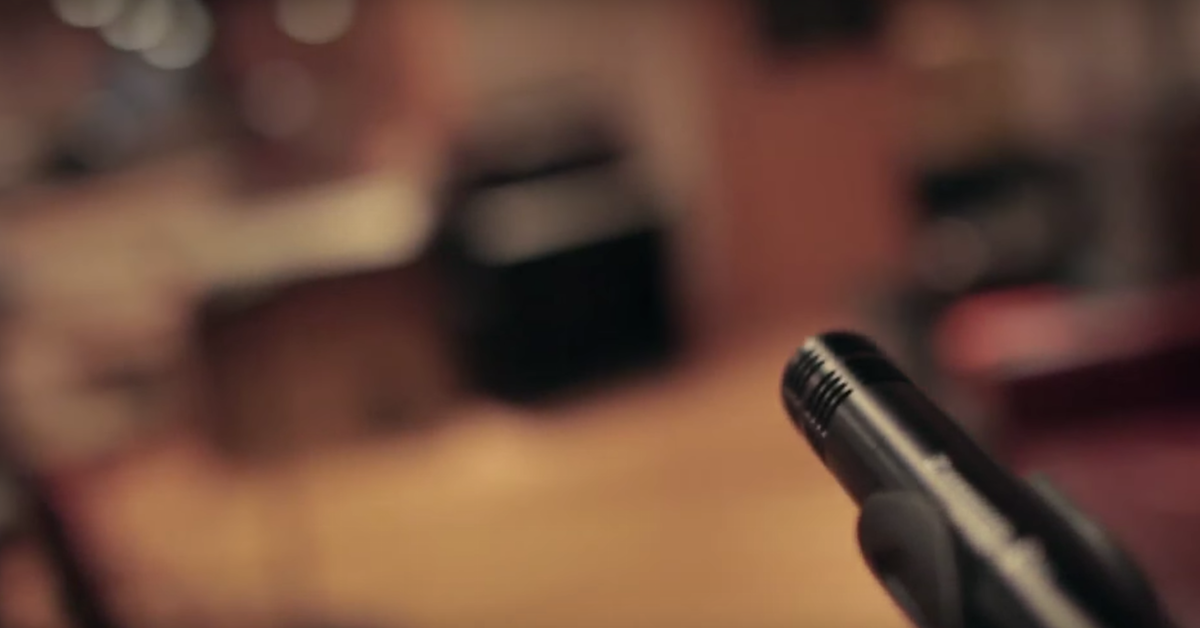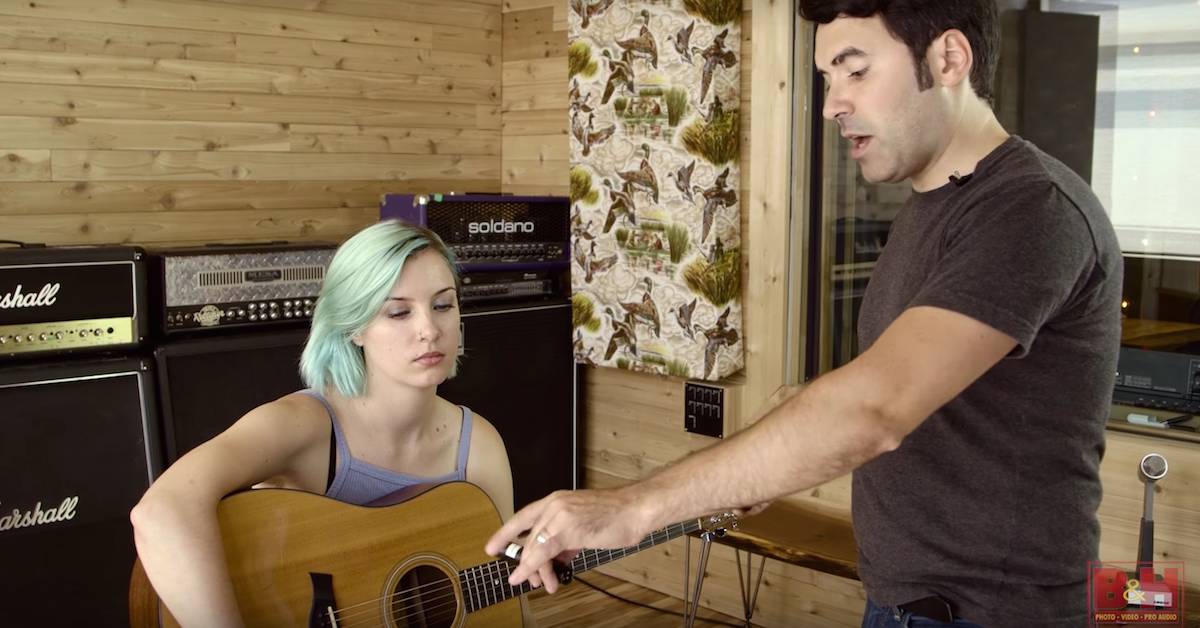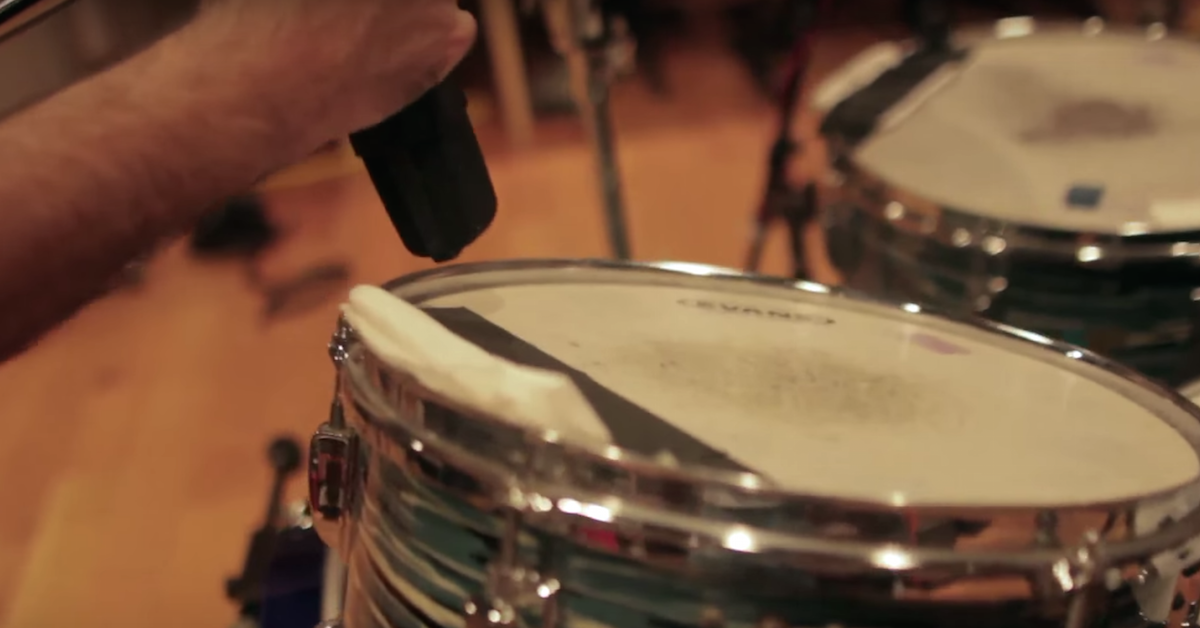Tips for Recording Drums: Overhead Microphone Placements Compared
This time, we’ll be looking at overhead mics. How to place them and what each of the main methods sound like.
We’re here at Strange Weather recording, we’ve got some great mics from our sponsor at Sennheiser, and really great drummer Parker Kindred behind the kit.
So alright, let’s get started!
So we’re going to start by looking at XY and ORTF. Two kind of similar positions, where the mics are going to stay fairly close together. The idea about keeping your mics fairly close together is phase coherence.
So XY, You want to line up your capsules so they’re pretty much touching. Ideally, they’d occupy the same space in the air, but they can’t. So you want your capsules pretty much touching at a ninety-degree angle. Almost like the corner of a rectangle. That’s XY. A lot of focus, decent stereo spread.
The next pattern we’re going to look at after that is ORTF, and for ORTF, the mics are actually about six and a half inches apart at the capsule so you can measure the capsule, pointing outwards at about 110 degrees. This gives us a little built of a wider stereo spread.
Stereo bar can make that pretty easy. Both of the mics can sit on the stereo bar and there will usually be marking to figure out just how far you can move your mics.
To get the distance, you can get a ruler, which is what we’re going to do today, or you can kind of eyeball it.
If you don’t have a stereo bar, again, XY, pretty easy. ORTF, you can kind of line up the back of the mics 90 degrees, and then just cheat them out a bit to 110. Get some extra distance. You’re pretty much there.
A common approach for XY or ORTF is to come in like this. But you could plausibly come behind the drummer’s head. If you were to do that, you might get a little bit less cymbal sound, and a little more of the skins and resonance of the drum, and that can be good if you have a real basher on the cymbals, which when you’re starting out, you’ll deal with a lot of cymbal bashers.
Only issue, if you’re coming from this angle, you might get a lot more bleed from the rest of the band if you’re tracking a group together.
What we’re going to do is start with XY from a front of kick position and then move into our ORTF. One last disclaimer I want to add on. The difference between the two takes you’re going to hear could be almost as significant as the difference between these two mic placements. They really are pretty similar.
So make sure you’re listening on a good pair of headphones or a good set of speakers, and you might want to go ahead and put this in high definition if you’re watching on YouTube over on the bottom right hand side of your screen, you can set this video to HD so you can make sure you’re going to hear the differences.
Alright, let’s hear them!
[drums, XY]
[drums, ORTF]
The next two overhead patterns we’re going to look at are spaced pair and Glyn Johns.
If you want to get more spread, more spaciousness, spaced pair. For spaced pair technique, you’re spacing them out left and right over the kit. There’s a million different approaches to spaced pair.
The way that I’m going to do it now is my kind of default approach. Some people will space them kind of close together, point them outwards, I tend to like to go pretty wide, because for me, half of the point of spaced pair is to get kind of exaggerated stereo spread. That kind of sound is not going to be right for every record, but on records where it does work, it really works.
If you want spread in your cymbals, if you want some kind of spread in your tom fills, a spaced pair can really help accent that.
The biggest thing for me though is centering the kick drum. Now, you might say, Justin, if you center the kick drum, the snare drum is going to be off to one side, to which I say, “your point?” That’s kind of how the kit sounds, and I don’t mind it. If you want to center your snare and have your kick off center, that’s your prerogative. Some people prefer it that way, that’s fine. There’s really no right and wrong way with spaced pair other than watch out for phase, which means if you’re too far away or too close together, higher likelihood of phase issues on any one piece of the kit.
If you’re further apart and lower down, less likelihood of phase issues on any one piece, especially pieces that are centered in between the two mics.
Another good method is Glyn Johns, and Glyn Johns is a nice compromise between the spaced pair, which can get you a lot of spread, for some people, too much spread, and those more focused micing options.
For Glyn Johns, you’re going to put a microphone directly over the snare drum. Maybe three to four feet up.
Your second microphone looks in over the shoulder of the tom drum towards the head of your snare.
Here’s the big catch. It wants to be exactly equidistant from your top mic. There’s a couple of ways to do this. You can again, get a tape measure. A lot of folks don’t have a tape measure in the studio, I almost never carry one, but you can take a microphone cable, mark off the distance, and check the distance to your tom mic.
With just those two mics and kick and snare, you’re in pretty good shape. You’ve got the whole kit covered, a lot of records have been made with just those four mics.
Let’s hear how these two sound.
[drums, spaced pair]
[drums, Glyn Johns]
Who is to say you need two overhead mics at all? We’re going to try one overhead. A lot of great records have been made this way in the past, and now. It’s a really classic approach.
This is a Neumann M269, kind of like a Neumann U67. We’ve got a Neumann FET 47 out in front of the kit right now. These are some pretty nice vintage mics from Strange Weather, but you can get newer versions of these kinds of mics distributed in the US now from Sennheiser. Let’s hear what this sounds like.
[drums, mono micing]
Thanks for tuning into this episode on overhead mics. Stay tuned for the next episodes on close micing and room micing. Subscribe for free at SonicScoop.com.
Thanks, see you next time.





